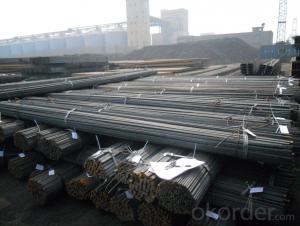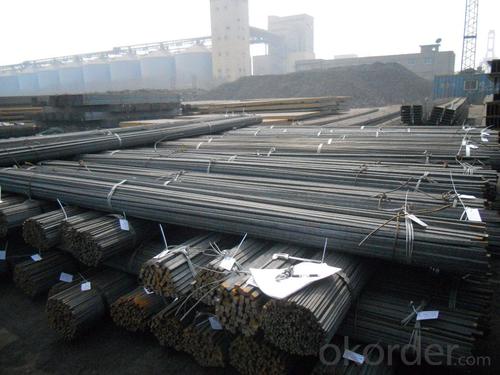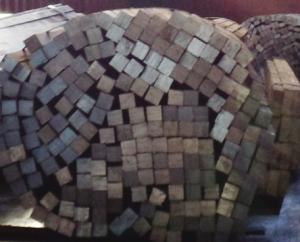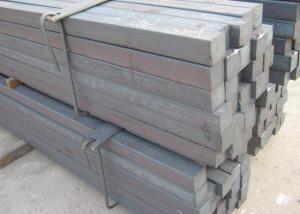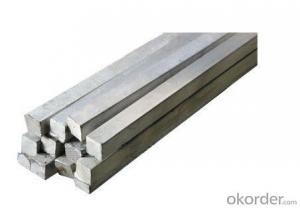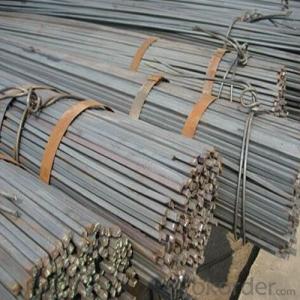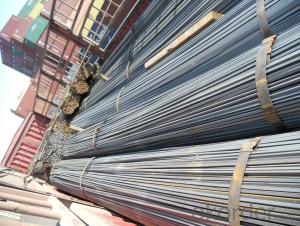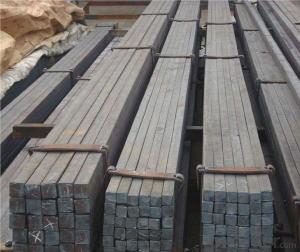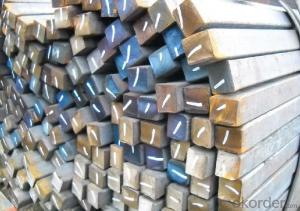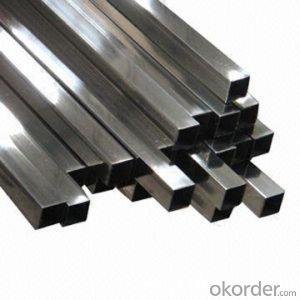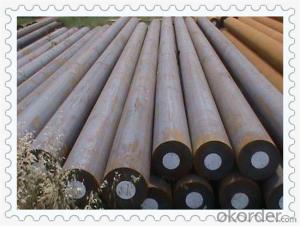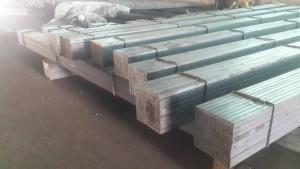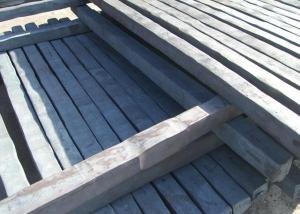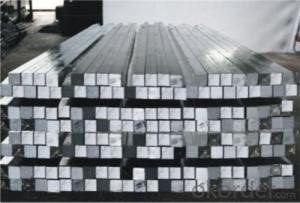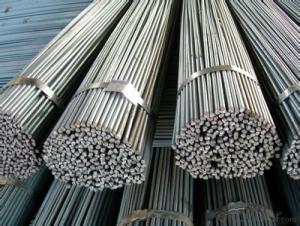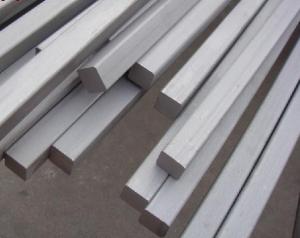Hot Rolled Square Steel Bars Q235, A36 with Cr
- Loading Port:
- Shanghai
- Payment Terms:
- TT OR LC
- Min Order Qty:
- 25 m.t.
- Supply Capability:
- 200000 m.t./month
OKorder Service Pledge
OKorder Financial Service
You Might Also Like
Specification
Product Description:
OKorder is offering Hot Rolled Square Steel Bars Q235, A36 with Cr with worldwide shipping. Our supplier is a world-class manufacturer of steel, with our products utilized the world over. OKorder annually supplies products to European, North American and Asian markets. We provide quotations within 24 hours of receiving an inquiry and guarantee competitive prices.
Product Applications:
-The HHot Rolled Square Steel Bars Q235, A36 with Cr is normally used as structure steel.
-Row material for other structure steel like steel angles, channels, I-beams, H-beams, etc…
Product Advantages:
OKorder's Hot Rolled Square Steel Bars Q235, A36 with Cr are durable, strong, and resist corrosion. Ang they satisfy the requirements of dififrent customers.
Main Product Features:
· Premium quality
· Prompt delivery & seaworthy packing (30 days after receiving deposit)
· Corrosion resistance
· Can be recycled and reused
· Mill test certification
· Professional Service
· Competitive pricing
Product Description of Hot Rolled Square Bar Steel for Constrcution:
Specifications of Hot Rolled Square Steel Bars Q235, A36 with Cr:
-Standard: GB,
-Grade: Q195/Q235 or equivalent.
Chemical Composition:
-Chemical Composition. Q195
Standard | Grade | Element (%) | ||||
GB | Q195 | C | Mn | S | P | Si |
0.06~0.12 | 0.25~0.50 | ≤0.050 | ≤0.045 | ≤0.30 | ||
-Chemical Composition. Q235
Standard | Grade | Element (%) | ||||
GB | Q235B | C | Mn | S | P | Si |
0.12~0.20 | 0.30~0.70 | ≤0.045 | ≤0.045 | ≤0.30 | ||
Measures and Tolerances of Hot Rolled Square Steel Bars Q235, A36 with Cr:
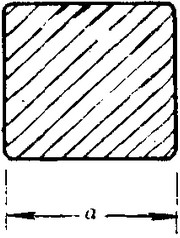
(The section of Hot Rolled Square Steel Bars Q235, A36 with Cr)
-The length of a side and the theoretical weight of Hot Rolled Square Steel Bars Q235, A36 with Cr.
Length of a side(a, mm) | Theoretical weight(kg/m) | Length of a side(a, mm) | Theoretical weight(kg/m) |
6 | 0.283 | 32 | 8.04 |
7 | 0.385 | *33 | 8.55 |
8 | 0.502 | 34 | 9.07 |
9 | 0.636 | *35 | 9.62 |
10 | 0.785 | 36 | 10.17 |
11 | 0.950 | 38 | 11.24 |
12 | 1.13 | 40 | 12.56 |
13 | 1.33 | 42 | 13.85 |
14 | 1.54 | 45 | 15.90 |
15 | 1.77 | 48 | 18.09 |
16 | 2.01 | 50 | 19.63 |
17 | 2.27 | 53 | 22.05 |
18 | 2.54 | *55 | 23.6 |
19 | 2.82 | 56 | 24.61 |
20 | 3.14 | *58 | 26.4 |
21 | 3.46 | 60 | 28.26 |
22 | 3.80 | 63 | 31.16 |
*23 | 4.15 | *65 | 33.17 |
24 | 4.52 | *68 | 36.3 |
25 | 4.91 | 79 | 38.49 |
26 | 5.30 | 75 | 44.16 |
*27 | 5.72 | 80 | 50.24 |
28 | 6.15 | 85 | 56.72 |
*29 | 6.60 | 90 | 63.59 |
30 | 7.06 | 95 | 70.85 |
*31 | 7.54 | 100 | 78.50 |
Notes:
1, The theoretical weights in the list, base on the density of 7.85 g/cm3.
2, The numbers with *mean that they are not regulars or we don’t offer them.
-The allowed tolerance of Hot Rolled Square Steel Bars Q235, A36 with Cr:
Length of a side(mm) | Allowed Tolerance | ||
Group1 | Group2 | Group3 | |
5.5~7 | ±0.20 | ±0.30 | ±0.40 |
7~20 | ±0.25 | ±0.35 | ±0.40 |
20~30 | ±0.30 | ±0.40 | ±0.50 |
30~50 | ±0.40 | ±0.50 | ±0.60 |
60~80 | ±0.60 | ±0.70 | ±0.80 |
80~110 | ±0.90 | ±1.0 | ±1.1 |
110~150 | ±1.2 | ±1.3 | ±1.1 |
150~190 | ―― | ―― | ±2.0 |
190~250 | ―― | ―― | ±2.5 |
Packaging & Delivery of Hot Rolled Square Steel Bars Q235, A36 with Cr:
-Packing Detail: The products can be packed in bundles by steel wires.
-Marks:
1, Tag marks: the tag marks will be tied up to each bundle of the products. The information is usually including supplier’s logo and name, product name, made in China, products’ specifications, the painted color and other information requested by customers.
2, Color marks: we will paint both ends of the bundles of these products to make sure that they are more evident. It’s will be more convenient for the customers to distinguish them at the destination port.
-Delivery Detail: 30~45 working days after receive buyer’s T.T. or L/C.
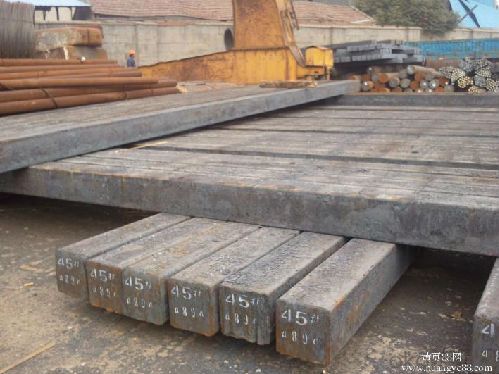
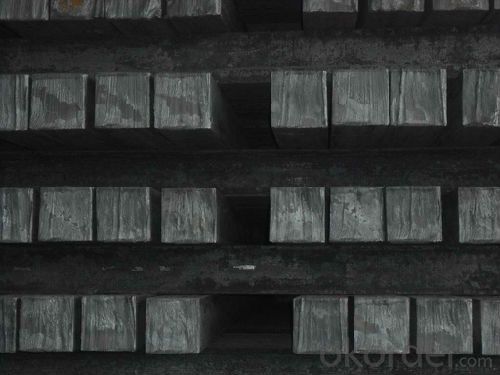
FAQ:
Q1: The products are invoicing on theoritical weight or on actual weight?
A1: We can do it in both manners, according to the customers' request.
Q2: How soon can we receive the product after purchase?
A2: Within three days of placing an order, we will begin production. The specific shipping date is dependent upon international and government factors, but is typically 7 to 10 workdays.
Q3: How do we guarantee the quality of our products?
A3: We have established an advanced quality management system which conducts strict quality tests at every step, from raw materials to the final product. At the same time, we provide extensive follow-up service assurances as required.
- Q: How do you determine the center of a circle using a steel square?
- A steel square cannot be used to determine the center of a circle. The center of a circle can be determined by using different methods such as finding the midpoint of the diameter or by drawing perpendicular bisectors of chords within the circle.
- Q: Can a steel square be used for checking the squareness of a jointer knife?
- No, a steel square cannot be used for checking the squareness of a jointer knife. A jointer knife requires a specialized tool, such as a dial indicator or a precision square, to accurately measure and verify its squareness.
- Q: TIG welding of stainless steel plate and steel, how to regulate the argon arc welding
- Wear zinc coating first, otherwise it is easy to form inclusion and other defects, and damage the strength of matrix.
- Q: Can a steel square be used for barn construction?
- Barn construction can indeed make use of a steel square. This versatile and durable tool is capable of performing various tasks within construction, such as layout, marking, and checking right angles. Its utility extends to framing walls, installing rafters, and creating trusses in a barn, ensuring precise measurements and angles. Moreover, steel squares possess resistance to warping and corrosion, rendering them a dependable choice for long-term usage in barn construction. Nevertheless, it is crucial to acknowledge that the particular requirements and regulations for barn construction may differ depending on the location and building codes. Therefore, seeking advice from a professional or local authorities is recommended to guarantee compliance with the necessary standards.
- Q: Can a steel square be used for checking the squareness of a router table top?
- Indeed, the squareness of a router table top can be assessed using a steel square. This tool is widely employed for verifying squareness and yielding precise measurements. Placing the steel square against the table top's edges guarantees their perpendicularity. By contrasting the table top's squareness with the steel square, any deviations or misalignments can be readily detected. This step is indispensable to guarantee the precision and accuracy of the router table since a flawless square table top is vital for attaining consistent and accurate cuts.
- Q: Can a steel square be used for marking angles?
- Yes, a steel square can be used for marking angles.
- Q: How do you use a steel square to determine the angle of a compound roundover cut?
- Follow these steps to determine the angle of a compound roundover cut using a steel square: 1. Identify the two surfaces that will be connected by the compound roundover cut, referring to them as Surface A and Surface B. 2. Place the steel square on Surface A, aligning one edge of the square with the surface's edge. Make sure the square is perpendicular to Surface A. 3. Extend Surface B towards the steel square, ensuring it overlaps with the blade of the square. 4. Take note of the intersection point between the blade of the steel square and Surface B. This point represents the angle at which the compound roundover cut needs to be made. 5. Measure the angle formed at the intersection point using a protractor or a digital angle finder. Record the measurement. 6. Transfer the angle measurement onto your workpiece by either marking it directly or replicating it with a bevel gauge. 7. Before proceeding with the compound roundover cut, double-check the accuracy of the angle measurement. Make adjustments to the square or re-measure if necessary. By utilizing a steel square in this manner, you can accurately determine the angle of a compound roundover cut, ensuring precise results in your woodworking or carpentry projects.
- Q: What are some common uses of a steel square in welding?
- A steel square, a versatile tool widely used in welding, has numerous applications. Some common uses of a steel square in welding include the following: 1. Ensuring Right Angles: The primary purpose of a steel square is to guarantee that welded joints are perfectly right angles, thus maintaining the structural integrity of the workpiece. 2. Accurate Measurement and Marking: With graduated scales along their edges, steel squares enable welders to measure and mark different lengths precisely. This ensures precise dimensions for welded components. 3. Layout and Pattern Creation: Steel squares are often employed in layout work to mark and create patterns, templates, and cut lines on metal surfaces. They allow welders to create perpendicular lines, parallel lines, and scribe circles and arcs. 4. Alignment Checking: Steel squares are handy for checking the alignment of welded components. Whether it's ensuring perfect alignment before welding or checking the alignment of a welded joint, a steel square ensures accurate alignment. 5. Checking Flatness and Squareness: Welders frequently use steel squares to verify the flatness and squareness of welded surfaces. By placing the square against the surface or weld, they can determine if the area is flat or if the edges are square. 6. Setting Up Welding Tables: Steel squares are useful for aligning and squaring the framework of welding tables, ensuring a stable and level surface for welding operations. 7. Fabrication and Assembly: Steel squares are commonly employed in the fabrication and assembly of welded structures. They aid in positioning and aligning components during the welding process, resulting in accurate and strong welds. In conclusion, a steel square is an indispensable tool in a welder's arsenal, providing accuracy, precision, and reliability for various welding applications.
- Q: Can a steel square be used for checking the squareness of a worktable?
- Yes, a steel square can be used for checking the squareness of a worktable.
- Q: What are the different ways to read angles on a steel square when working with metal?
- There are several different ways to read angles on a steel square when working with metal. One way is to use the markings on the square itself, which often include degrees and increments of 45 and 90 degrees. Another method is to use a protractor or angle finder tool, which can provide more precise measurements for more complex angles. Additionally, some steel squares have built-in digital displays or laser guides that allow for even more accurate angle readings.
Send your message to us
Hot Rolled Square Steel Bars Q235, A36 with Cr
- Loading Port:
- Shanghai
- Payment Terms:
- TT OR LC
- Min Order Qty:
- 25 m.t.
- Supply Capability:
- 200000 m.t./month
OKorder Service Pledge
OKorder Financial Service
Similar products
Hot products
Hot Searches
Related keywords
